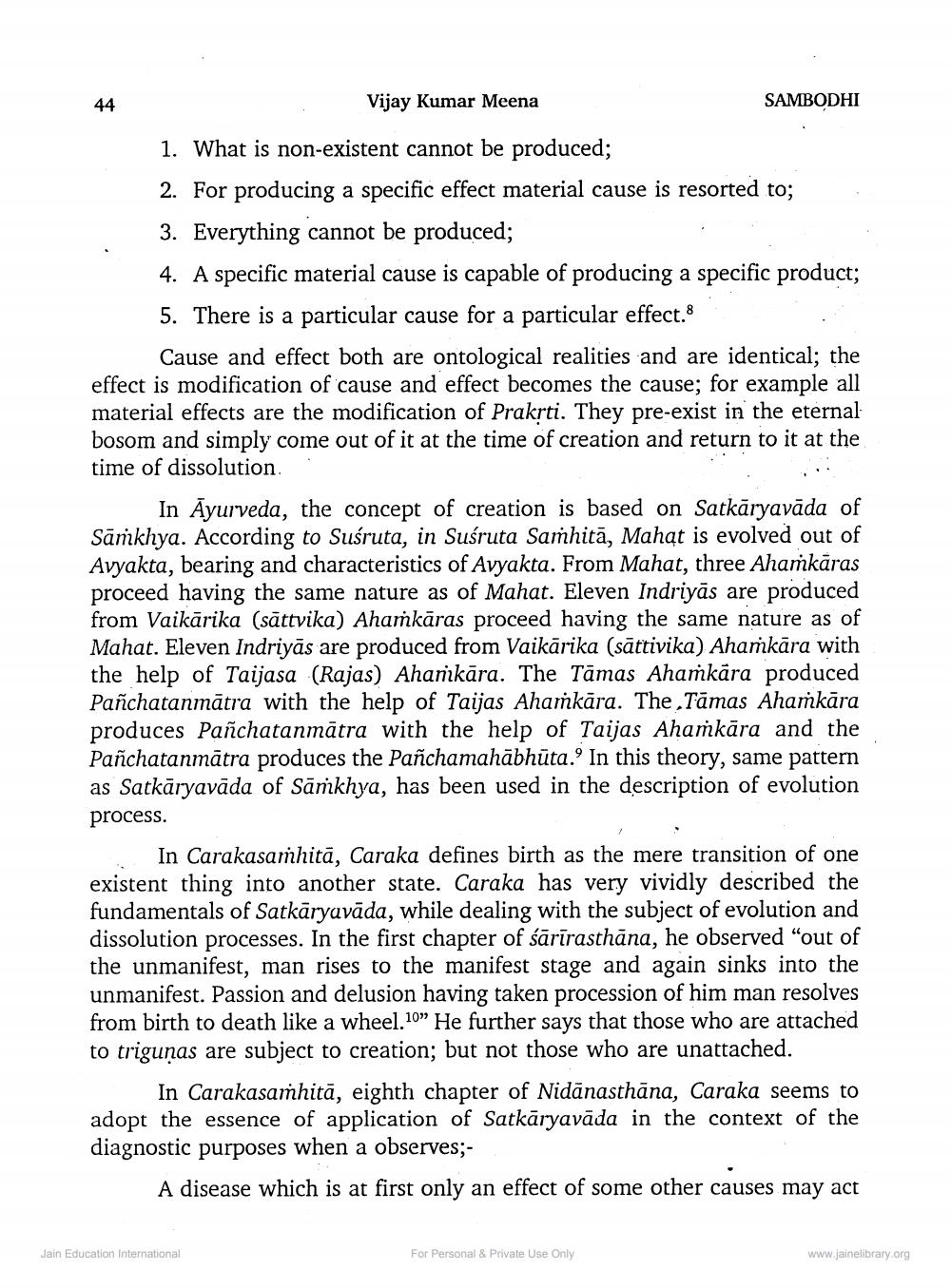________________
Vijay Kumar Meena
SAMBODHI
1. What is non-existent cannot be produced; 2. For producing a specific effect material cause is resorted to; 3. Everything cannot be produced; 4. A specific material cause is capable of producing a specific product; 5. There is a particular cause for a particular effect.8
Cause and effect both are ontological realities and are identical; the effect is modification of cause and effect becomes the cause; for example all material effects are the modification of Prakrti. They pre-exist in the eternalbosom and simply come out of it at the time of creation and return to it at the time of dissolution
In Āyurveda, the concept of creation is based on Satkāryavāda of Sankhya. According to Suśruta, in Suśruta Samhita, Mahat is evolved out of Avyakta, bearing and characteristics of Avyakta. From Mahat, three Ahamkāras proceed having the same nature as of Mahat. Eleven Indriyās are produced from Vaikārika (sāttvika) Ahamkāras proceed having the same nature as of Mahat. Eleven Indriyās are produced from Vaikārika (sāttivika) Ahamkāra with the help of Taijasa (Rajas) Ahankāra. The Tāmas Ahamkāra produced Panchatanmātra with the help of Taijas Ahamkāra. The .Tāmas Ahamkāra produces Pañchatanmātra with the help of Taijas Ahamkāra and the Panchatanmātra produces the Pañchamahābhūta. In this theory, same pattern as Satkāryavāda of Sāmkhya, has been used in the description of evolution process.
In Carakasamhitā, Caraka defines birth as the mere transition of one existent thing into another state. Caraka has very vividly described the fundamentals of Satkāryavāda, while dealing with the subject of evolution and dissolution processes. In the first chapter of śārīrasthāna, he observed "out of the unmanifest, man rises to the manifest stage and again sinks into the unmanifest. Passion and delusion having taken procession of him man resolves from birth to death like a wheel.10” He further says that those who are attached to trigunas are subject to creation; but not those who are unattached.
In Carakasaṁhitā, eighth chapter of Nidānasthāna, Caraka seems to adopt the essence of application of Satkāryavāda in the context of the diagnostic purposes when a observes;
A disease which is at first only an effect of some other causes may act
Jain Education International
For Personal & Private Use Only
www.jainelibrary.org




